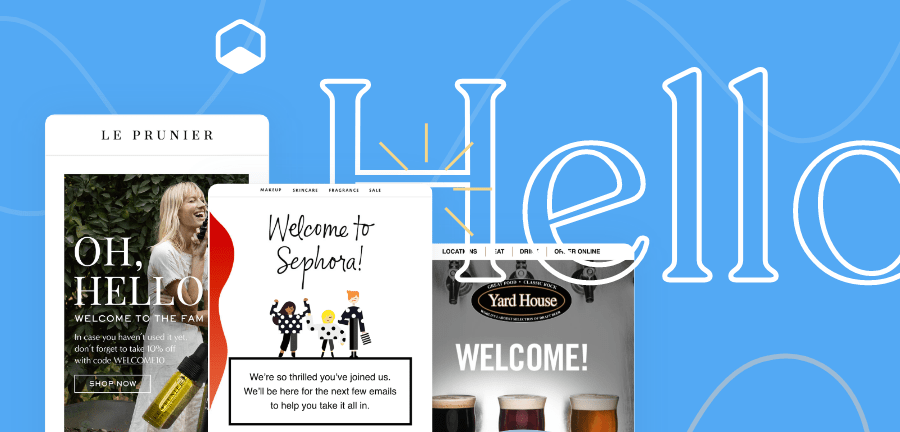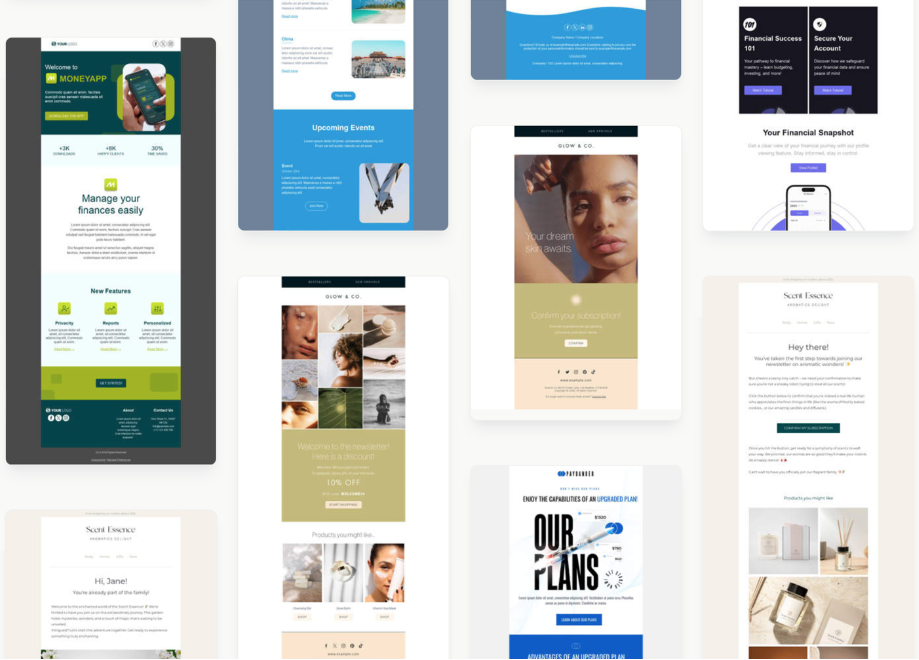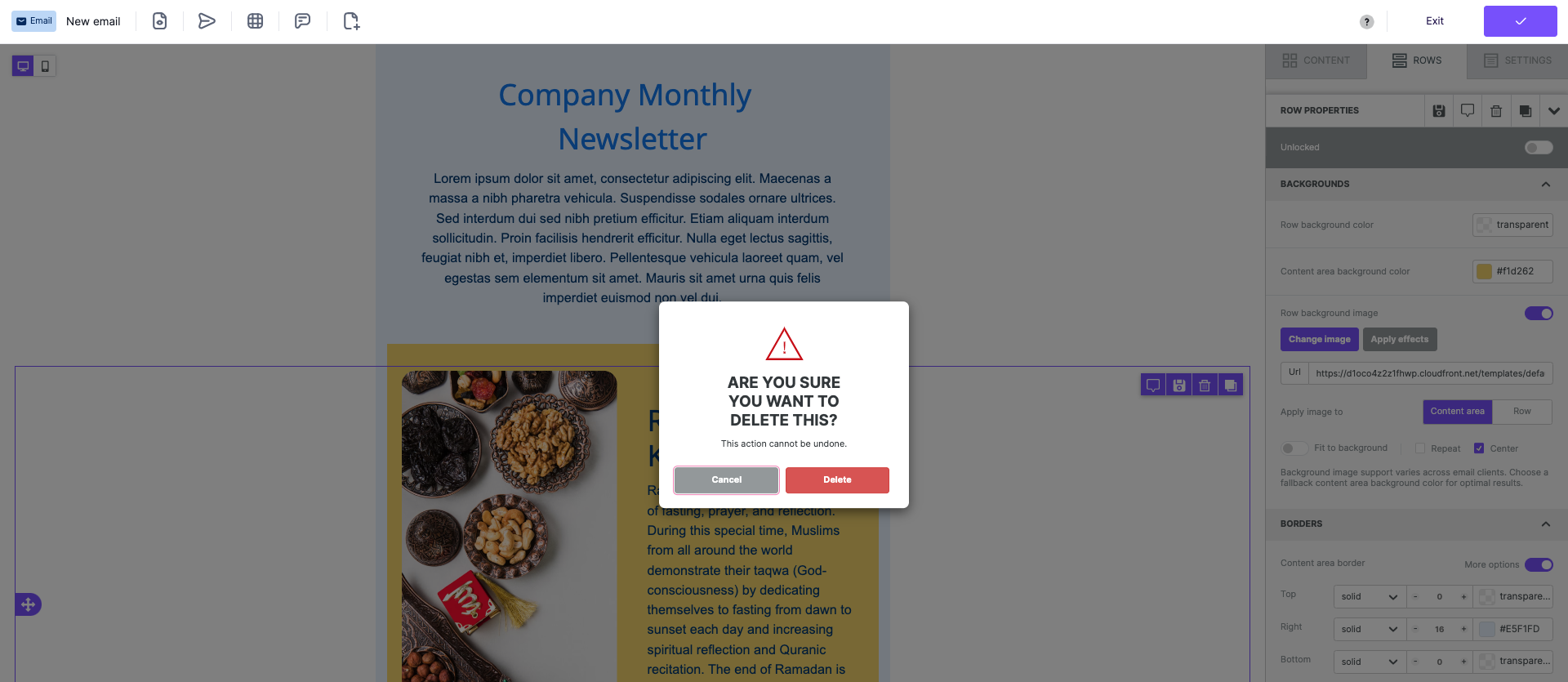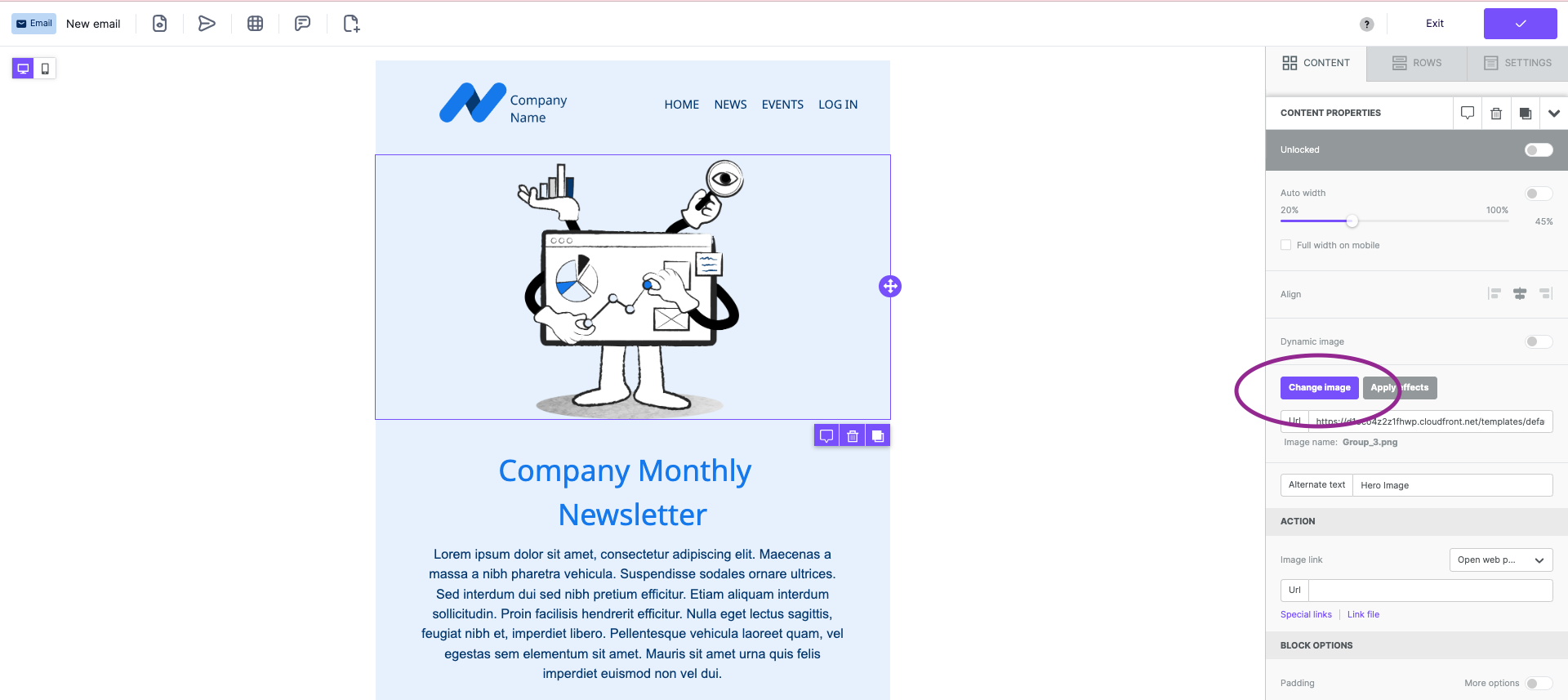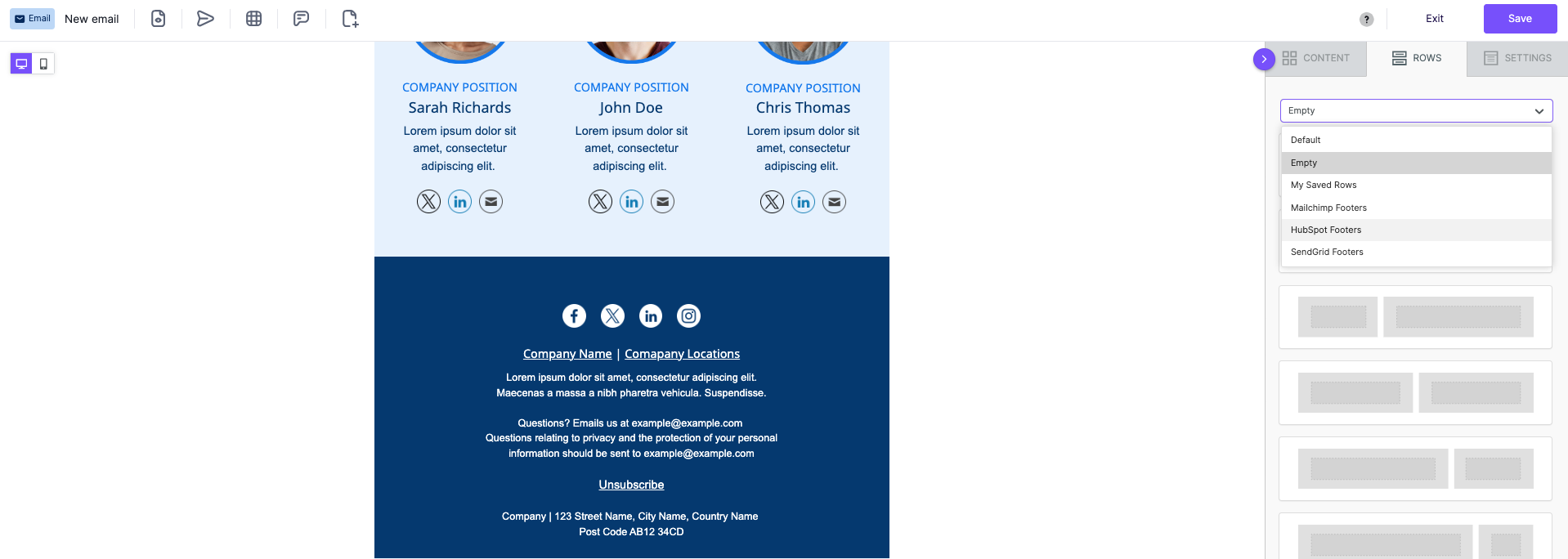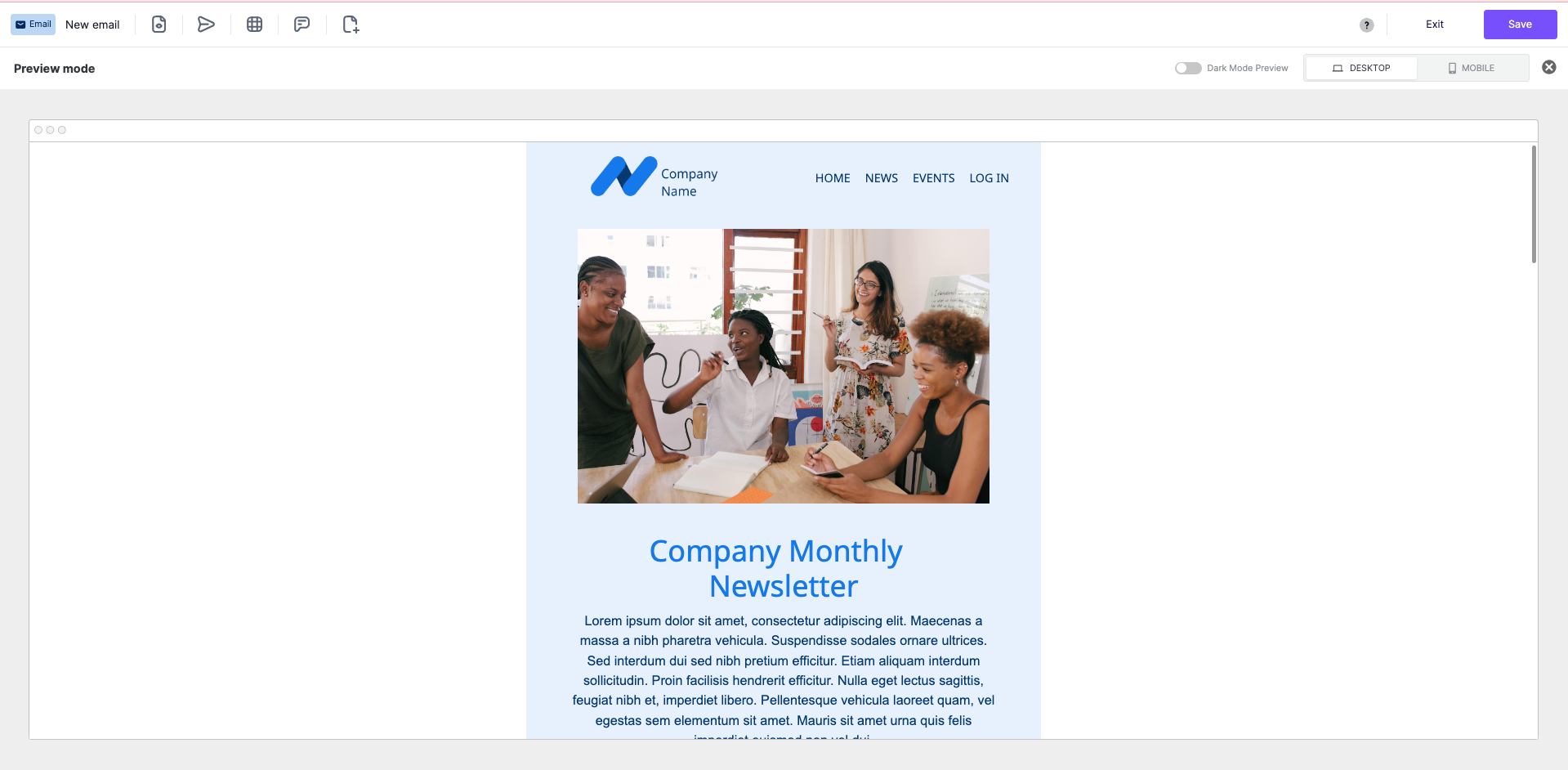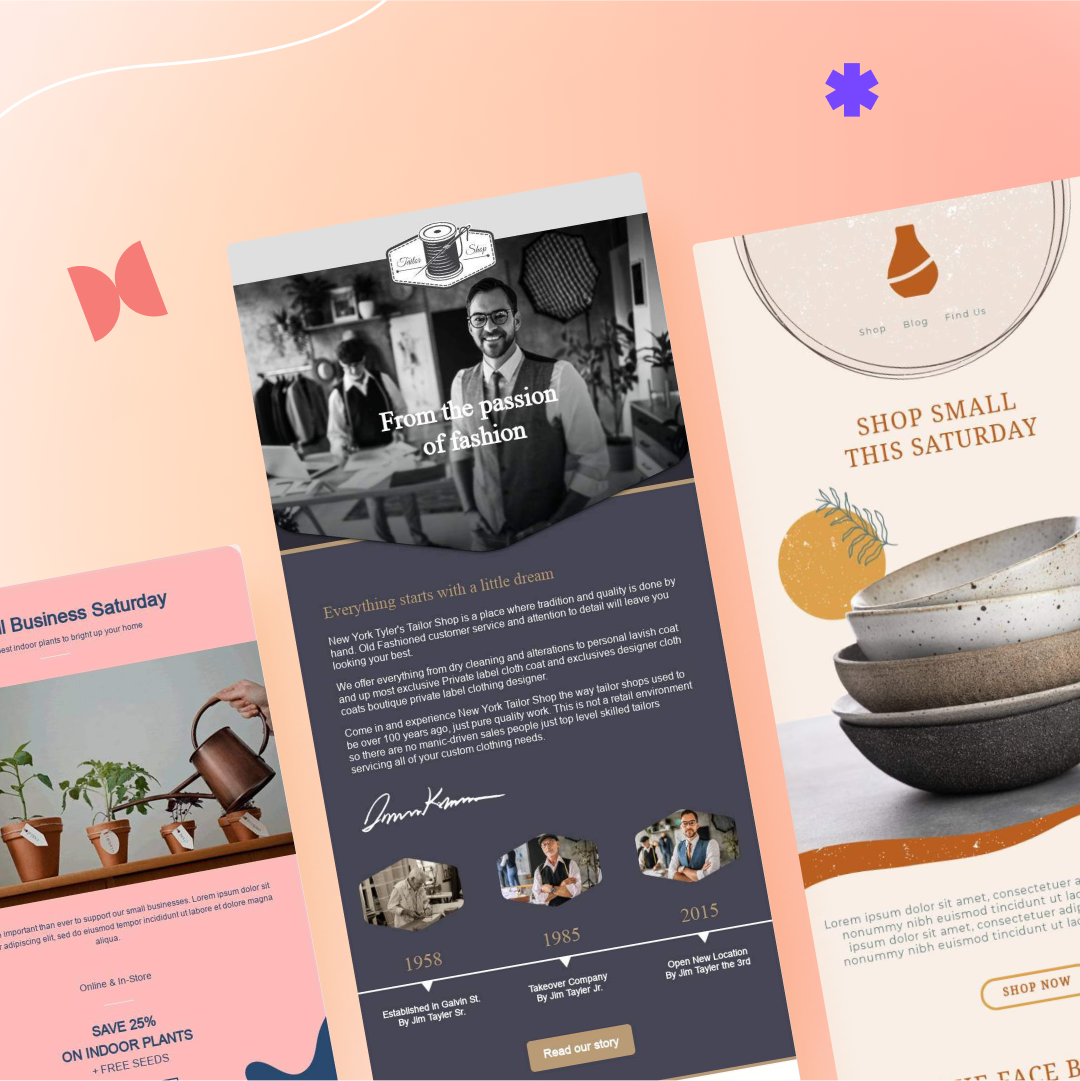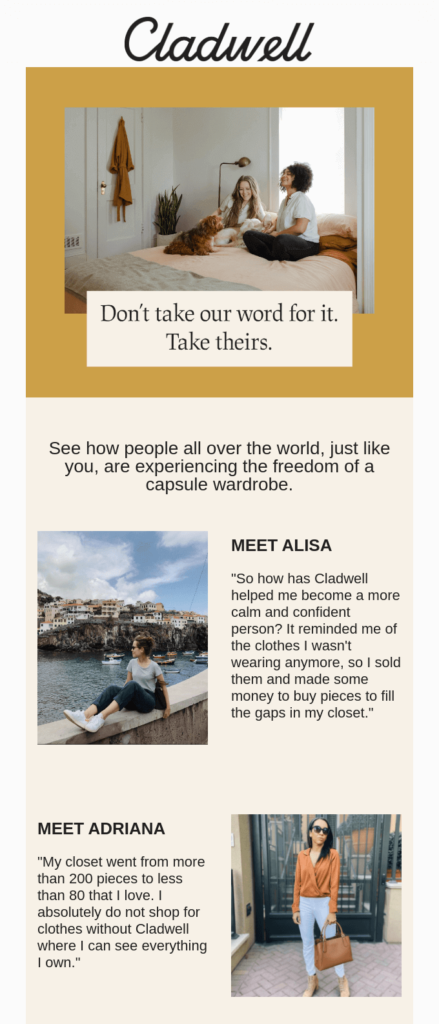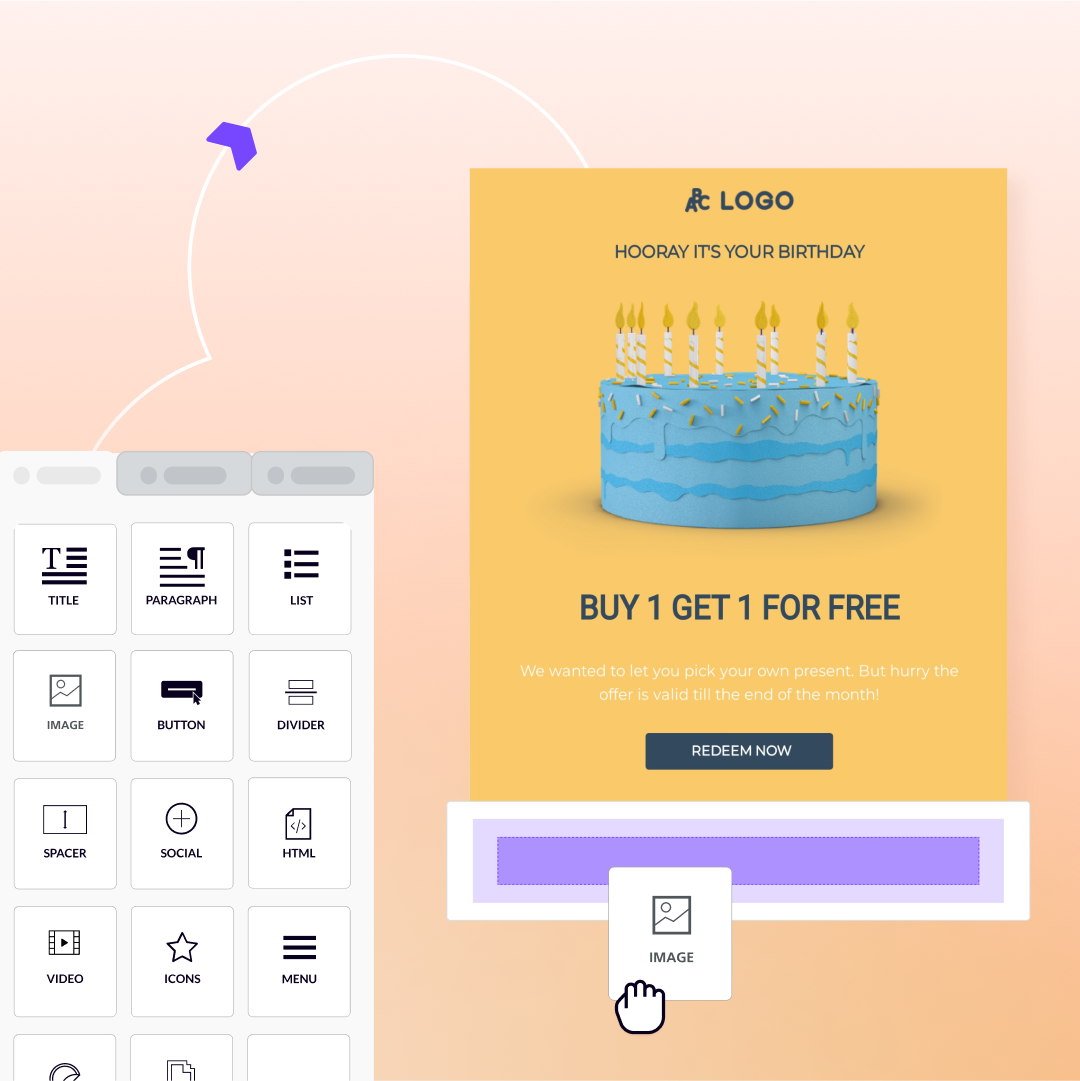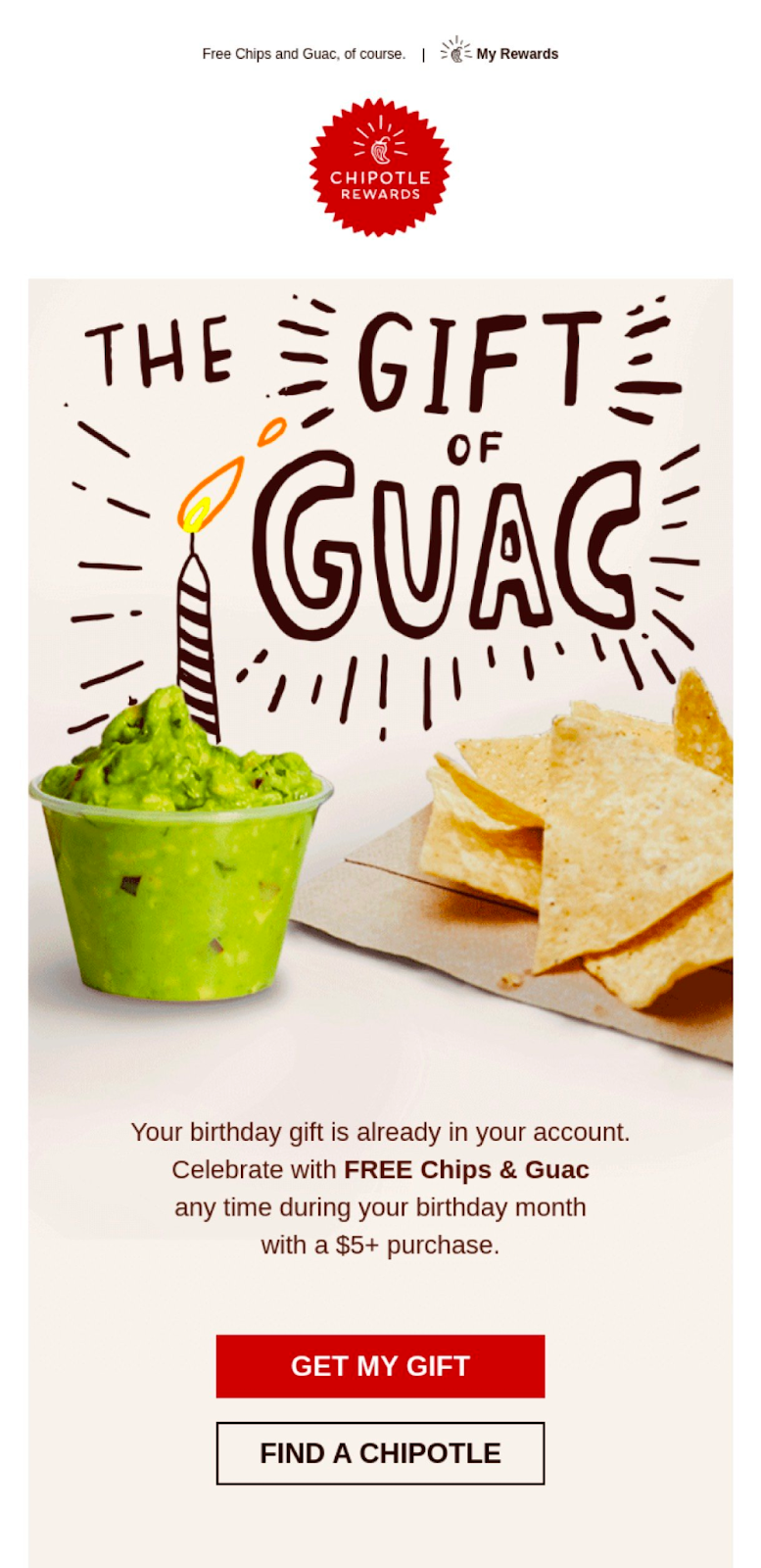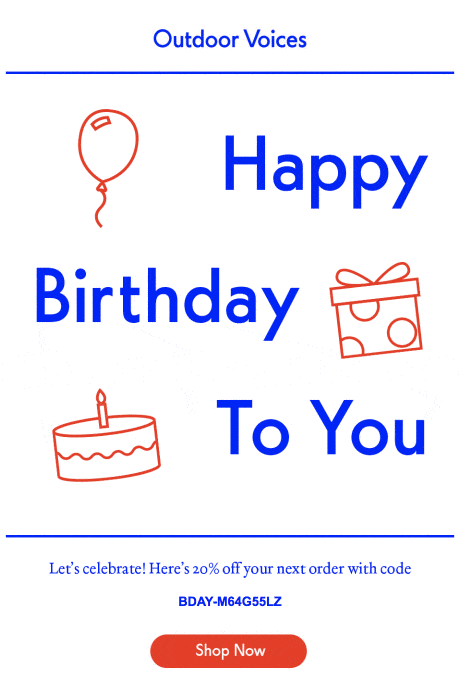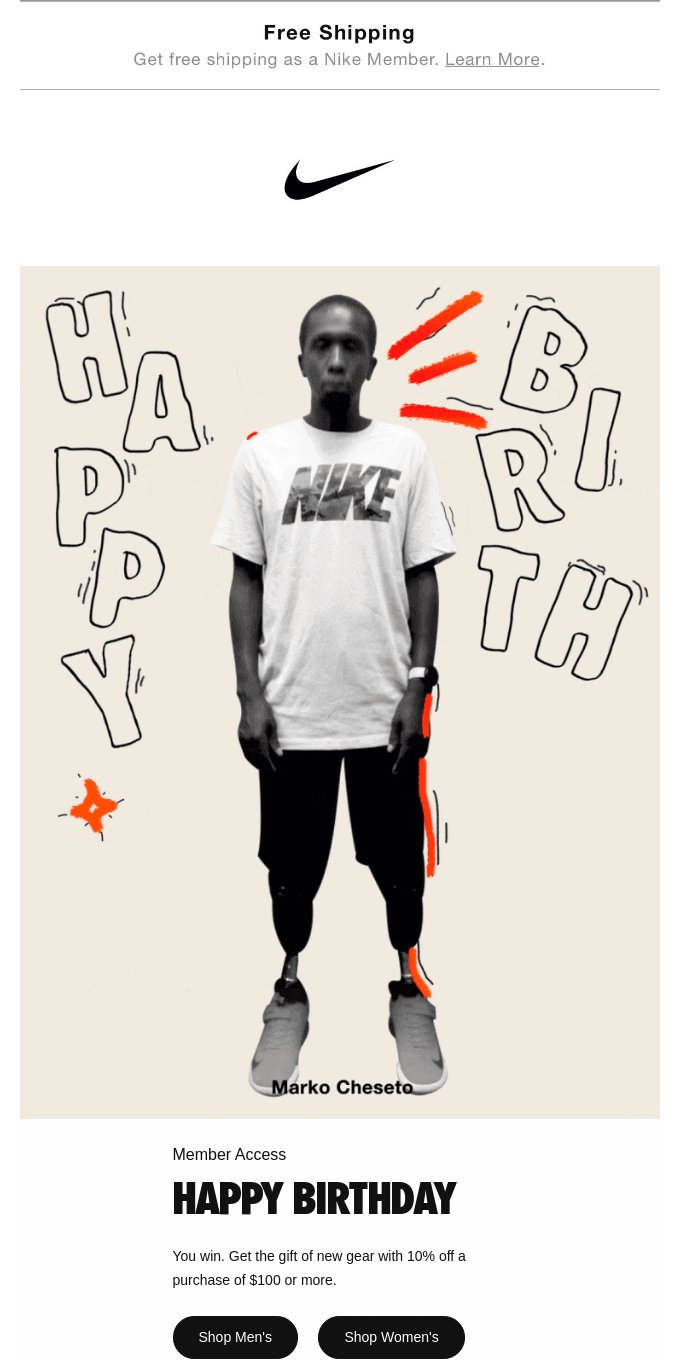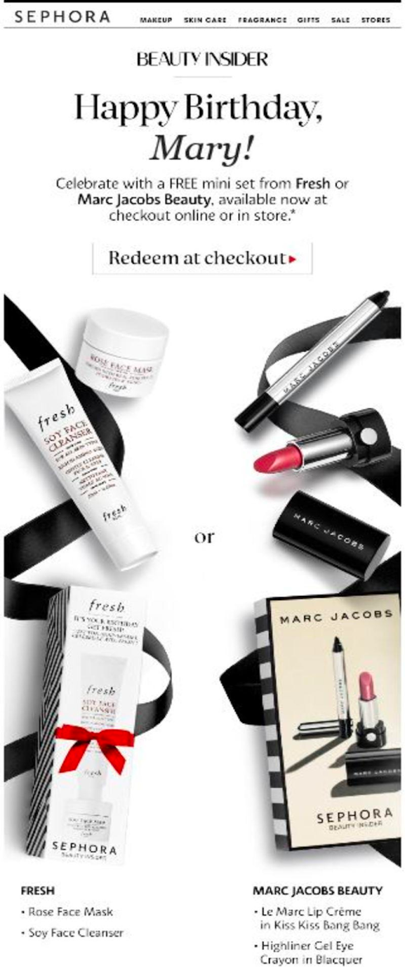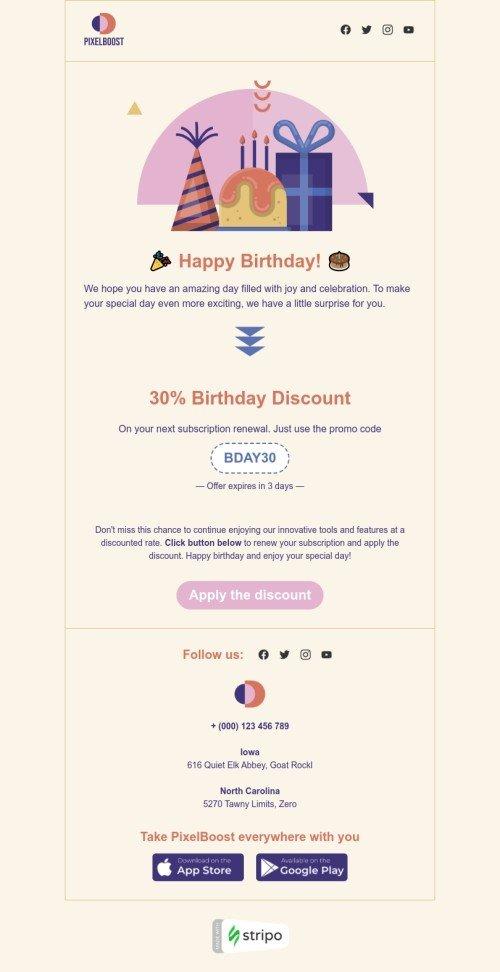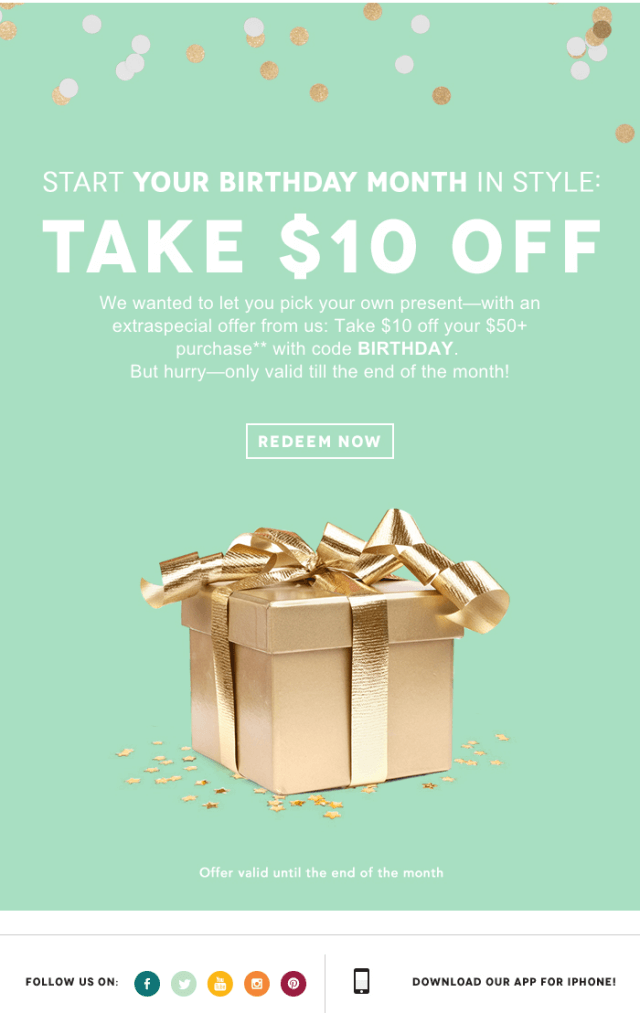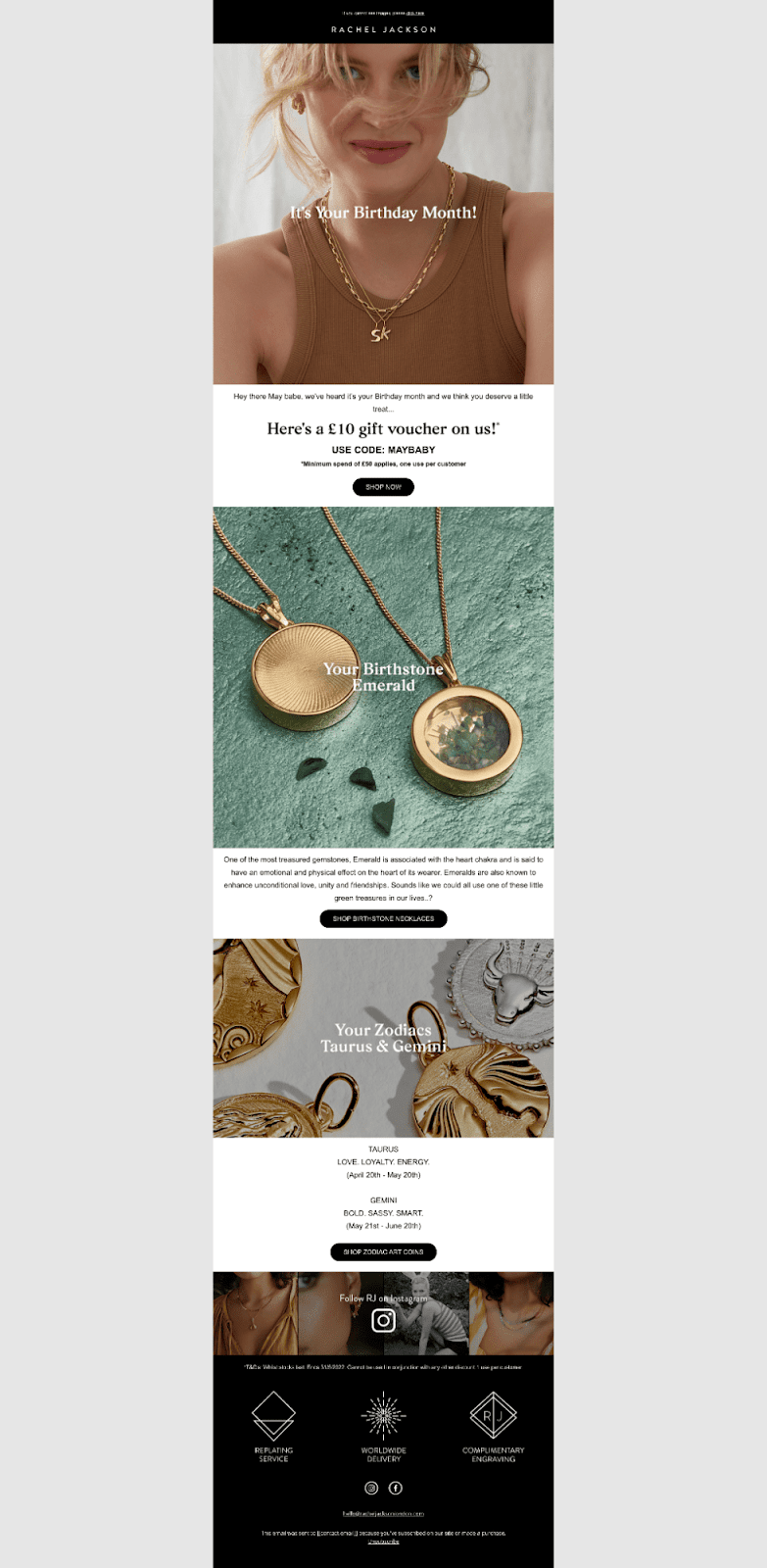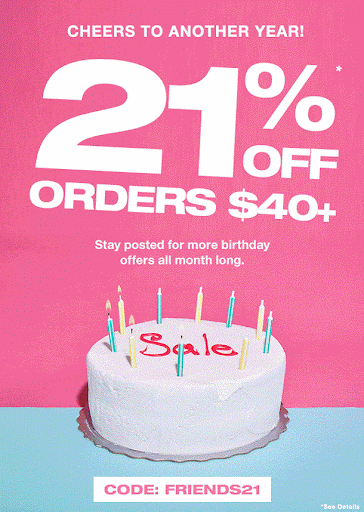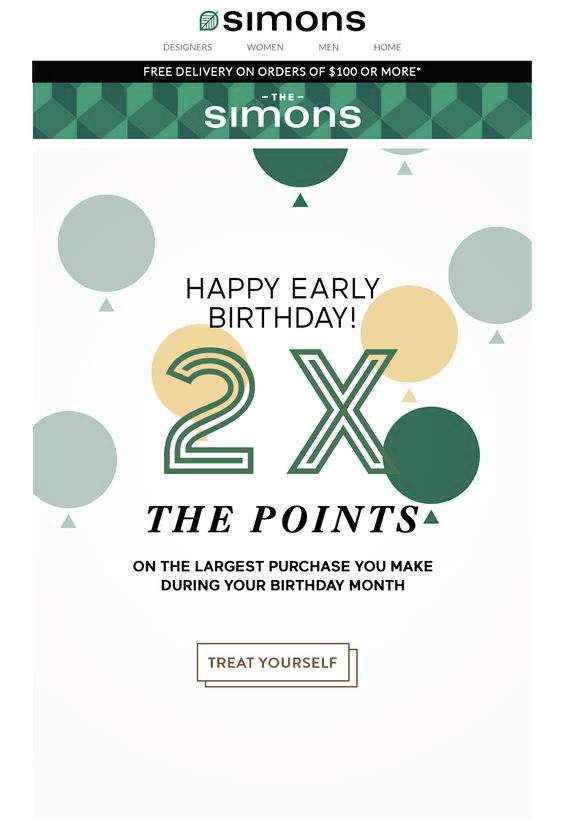First impressions are powerful, and that’s just as true when you’re marketing your brand as it is when you’re getting dressed for a job interview or getting ready for a first date. When you send a welcome email to new subscribers, that email is a first impression and a first step in creating a strong customer relationship, so it’s imperative that you get things off on the right foot. A welcome email campaign can start to build credibility and loyalty, showing benefits long past that initial message.Want to create lasting customer relationships? A strong welcome email should put your branding front and center, let subscribers know they’re valued, and give readers an idea of what they’ll receive as subscribers. To guide your welcome email design, here are a few welcome email examples and tips from our email marketing pros.
What is a welcome email?
A welcome email is simply the email you send to people when they first subscribe to your email list. These emails are usually brief and straightforward but they serve several purposes:
- Confirming for subscribers that their sign-up was successful
- Giving a warm welcome to new subscribers
- Building on subscribers’ excitement about your business by telling them what they can look forward to from your emails so that they stay engaged with your brand
In these ways, your welcome email will set the tone for your future relationship with this new subscriber, so make it count!
15 Examples of great welcome emails
Where do you start when crafting an effective welcome email that sends the right message and nurtures lasting customer loyalty? While every welcome email will be unique because it should be true to your brand, there are plenty of ideas and techniques you can use. We’ve curated 15 stellar examples of welcome emails to inspire your design process.
1. Sprouts
Type of welcome email: Brand introduction
One approach you can take to your welcome email is to use it to introduce the subscriber to your business. Give them an overview of who you are, why you’re a fantastic partner for them to have, and why they’ll love being a subscriber and customer. Check out how the grocery chain Sprouts tells new subscribers what makes them special in their welcome email.Subject line: Hey Hailey, welcome to Sprouts!This welcome email from Sprouts makes it as easy as possible for you to go shopping. The message gives you a peek inside the store complete with photos and an explanation of symbols used on their signage. For customers who have never shopped at Sprouts before, this welcome email example makes it simple to get started.Why it works:
- Introduces the brand’s shopping experience and what it has to offer
- Invites readers to engage further with text alerts
- Tells subscribers what to expect from future emails
- Makes the branding prominent by featuring the brand colors
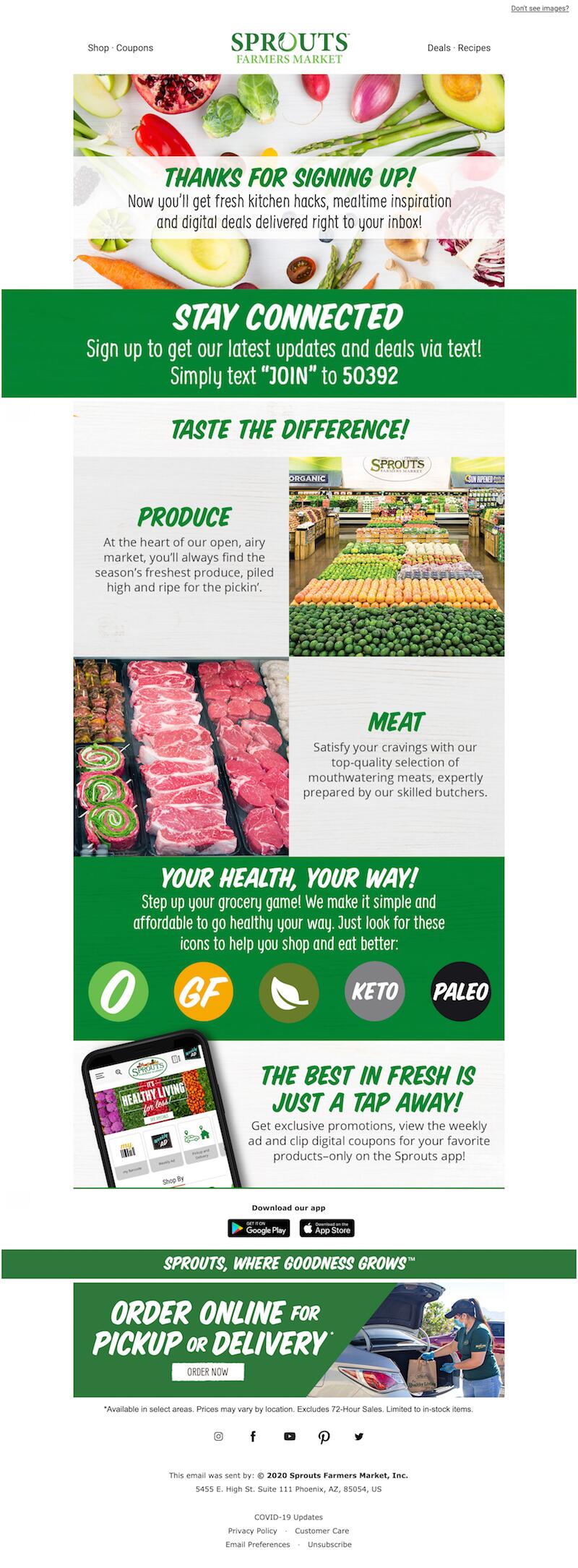
2. Le Prunier
Type of welcome email: Discount code
A discount code is a great component to add to your welcome email design. They give subscribers an incentive to shop while also making them feel appreciated as subscribers. Welcome emails with offers can boost revenue by 30% per email compared to welcome emails without offers. Try sending a simple 10% off discount code, like Le Prunier does here.
Subject line: Welcome to Le Prunier!Le Prunier uses the 10% discount to thank the reader for subscribing and to prompt them to shop the site, but its welcome email goes beyond this too. It puts its welcome message front and center so subscribers feel like they’ve been warmly embraced and it gives a brief elevator pitch too, introducing subscribers to the brand’s core product.Why it works:
- Features a simple design that’s easy to understand and doesn’t overload the reader with information
- Gives the subscriber the high points of the core product and its benefits
- Offers enough of a discount to encourage subscribers to shop

3. KIND Snacks
Type of welcome email: Product features
We’ve already talked about using welcome emails to introduce a subscriber to your business, but you can also take a more detailed approach by offering an overview of your core products. This serves the purpose of not only introducing the subscriber to what you have to offer but also attracting their attention and enticing them to click through and shop. KIND Snacks does this by showing off some of its most mouthwatering snack bars.Subject line: Welcome to the KIND familyThis welcome email example provides a nice overview of KIND’s products. In a simple single-column layout, KIND lists four of its most popular products, providing a photo, simple description and CTA button for each. At the end of the email, readers also have the option to “Shop All Snacks” via a separate CTA button that leads to the entire store.Why it works:
- Uses clever puns and relatable messaging to build familiarity with subscribers
- Features high-quality images that are appetizing and appealing
- Offers a discount to give subscribers more of a reason to click on their appetizing featured products

4. Yard House
Type of welcome email: Free gift
Customers can unsubscribe from your mailing list just as quickly as they subscribed, so it’s important to keep them engaged from the start. One way to do this is to reassure them that they have made the right choice by welcoming them with a free gift. Check out how restaurant chain Yard House has used this technique to generate enthusiasm from their subscribers immediately.Subject line: You’re officially a House Insider!After giving subscribers a warm welcome, Yard House lays out the perks for subscribers,like inside peaks at new menu items and an updated list of the latest beers on tap, but the main draw is a free appetizer for their next visit.It’s also important to note that Yard House sends this welcome email as soon as somebody signs up for the company’s newsletter. It’s best not to wait too long to send a welcome email to a customer. When they opt in to your emails, your brand is on their mind — they’re expecting to receive a message. So your welcome email is more likely to be opened and read if you send it right away.Why it works:
- Features an appealing and on-brand design
- Clearly articulates why the subscriber should be glad they signed up and should continue to subscribe
- Encourages subscribers to visit the restaurant with the special offer of a free appetizer

5. Sephora
Type of welcome email: GIF
Many of your subscribers get dozens or even hundreds of emails every day. You want your welcome email to stand out so it delivers the message that you have carefully crafted. One clever and fun way to do this is with an eye-catching GIF. The movement of the GIF grabs readers’ attention and draws them in so they’re more engaged in the introduction to your brand.Subject line: Welcome to Sephora! 🎉Sephora uses the cute GIF at the top of the welcome email to snag the subscriber’s attention and then it uses other techniques to welcome the subscriber and tell them what the brand has to offer. It highlights a few of its exclusive products and its free rewards program. And we absolutely love the checklist at the bottom of the message: The “Your Sephora Welcome Series” lets readers see what’s coming to their inboxes next.Why it works:
- Uses a GIF that’s attractive and engaging but isn’t so complex that it makes the email download slowly
- Gives subscribers an incentive to take a step further and join the brand’s rewards program
- Recommends products to encourage readers to shop

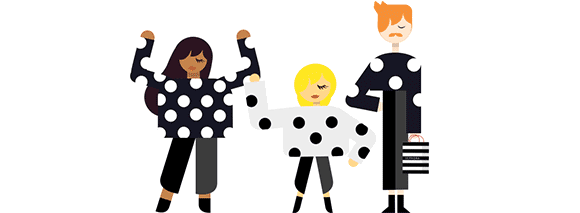
6. Monday.com
Type of welcome email: Social confirmation
Showcasing that other people are using a product is a great way to encourage new customers to sign up because they think, “if that many people use this, they must be enjoying it!” That’s an excellent strategy for a variety of different marketing projects including your welcome email. Let subscribers know that they’ve now joined a popular club (or could join it by taking the next step and becoming a customer). One brand that does this well in its welcome email is Monday.com.Subject line: Welcome to monday.comIn this welcome email example from Monday.com, the company includes a user statistic, tapping into the bandwagon effect to get more people to jump on board. To add even more reasons to enjoy the brand’s product, it provides a bulleted list of features, shining a light on the benefits of Monday.com’s services and letting you know how the platform works.Why it works:
- Speaks to users’ desire to find out why the product is so popular
- Keeps the email short and to the point, serving as a true introduction without overwhelming readers with information
- Encourages ongoing engagement with a clear call-to-action to take subscribers to their accounts and explore the platform’s features
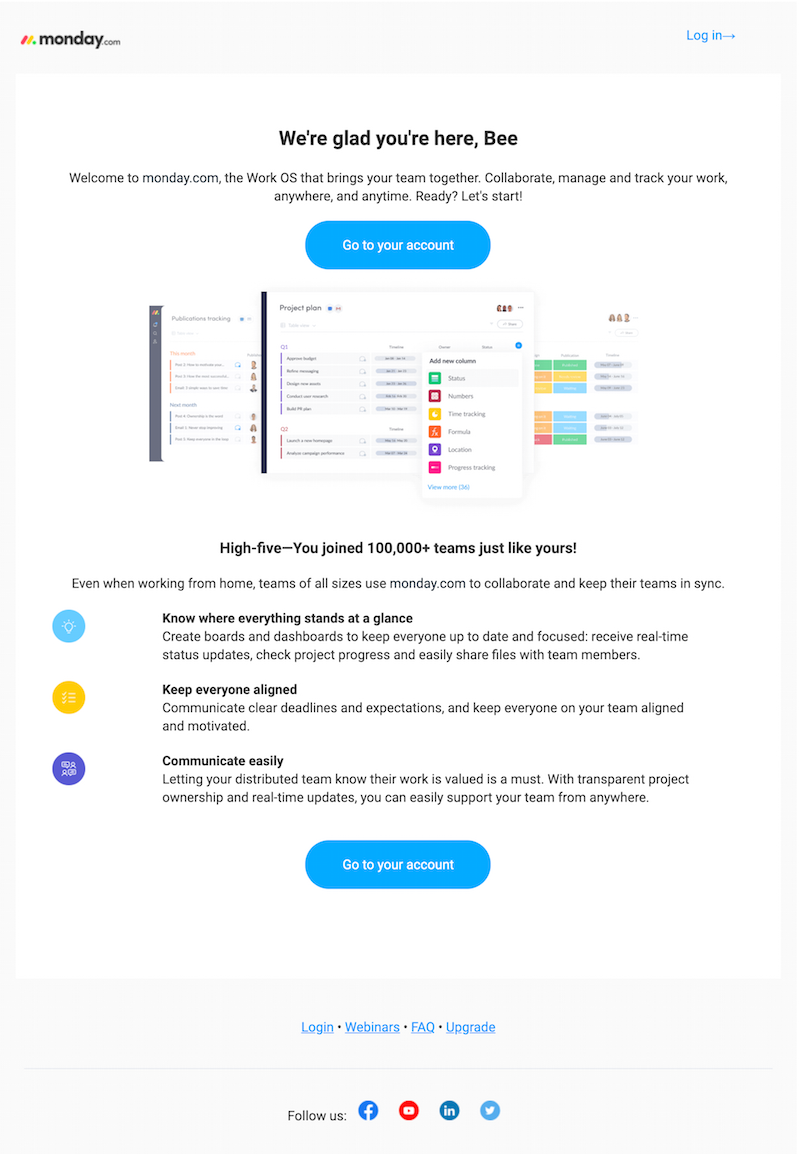
7. Purina
Type of welcome email: Getting to know you
Your welcome email doesn’t just tell subscribers about your brand - it can tell your brand about subscribers too. When you strategically use your welcome email to ask for more information, you can better serve your new customers. You’ll be able to use that information to segment your emails, sending each subscriber relevant, personalized content they want to read.You can create segments based on geographic location, purchase history, or other information about your customer. It’s all a matter of what you’re able to learn about your subscribers, and your welcome email is an excellent place to start. Take a look at Purina’s welcome email and how they use this strategy.Subject line: Bee, welcome to the Purina familyIn this welcome email, Purina asks new customers for more information about their pets. The “tell us about your pet” CTA button takes you to a page where you can check off whether you have a dog or cat and input their name, birthday, and size. All of these questions provide Purina with more opportunities to specifically market to individual customers.Why it works:
- Uses a clear CTA to direct subscribers toward the customer profile
- Maintains a simple design so the CTA doesn’t get lost in the clutter of too much information
- Builds familiarity with the brand by highlighting the brand’s values with the three icons and statements at the bottom
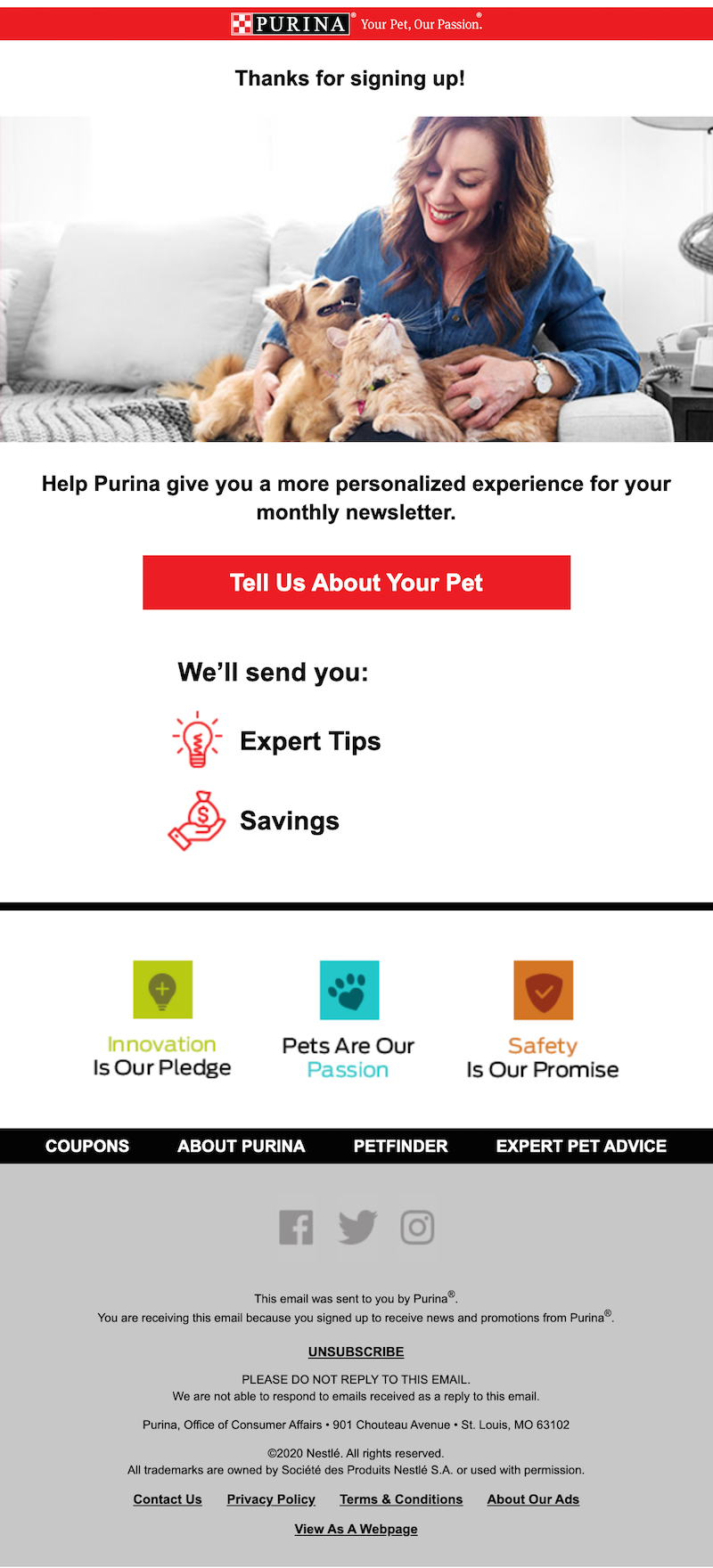
8. Warby Parker
Type of welcome email: Keeping it simple
A welcome email doesn’t have to be overly detailed and complex. In fact, a simple, straightforward design with plenty of white space will allow your subscribers to take in your core message without being distracted by other information. One brand that does an excellent job of using strategic white space is Warby Parker:Header: "You're all signed up"
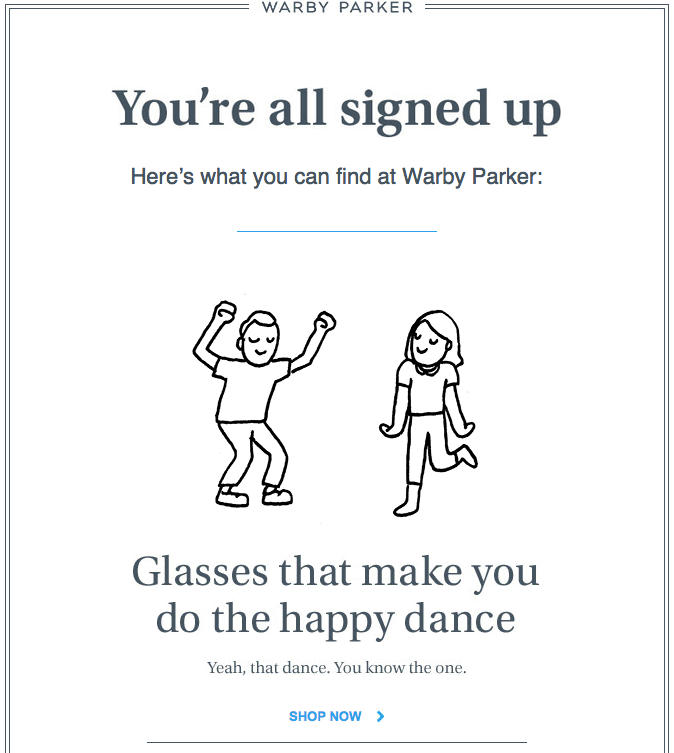
The brand also grabs their subscribers’ attention with a clever GIF:

Warby Parker‘s mission is to make shopping for glasses simple, easy, and fun. The company’s welcome email reflects that brand mission with a simple message that’s easy on the eyes—clean and modern-looking with lots of white space—but still exudes a fun energy with the animated graphic right at the top. There is good support for GIFs in email clients (see this Litmus report on the subject), and they are a great way to put some fun in your messages.
Why it works:
- Uses a simple design to keep the core message from becoming choked by clutter
- Creates a positive association with the brand through happy and lighthearted messaging
- Provides a CTA that invites subscribers to start shopping
- Uses a GIF to engage readers and stand out
9. Rolling Stone
Type of welcome email: Social media engagement
Your welcome email is an introduction to your brand, so it’s an excellent place to let subscribers know where they can learn more about you. When you feature your social media pages in your welcome email and link to them for an easy user experience, you encourage the subscriber to become more invested in your brand and be part of your community. Check out how Rolling Stone does this:Header: "Thank you for signing up for the Rolling Stone Newsletter!"Rolling Stone doesn’t inundate subscribers with content right away. Instead, the magazine’s message is simple: “Thank you.” It confirms for subscribers that the newsletter will be on its way, and in the meantime lets them know where to connect with Rolling Stone on social media.Why it works:
- Simplistic design keeps the focus on welcoming subscribers and highlighting the brand’s social media pages
- Social media icons are recognizable but still within the brand’s color scheme, keeping them consistent with the brand’s image
- Let subscribers know what they can look forward to in the newsletter
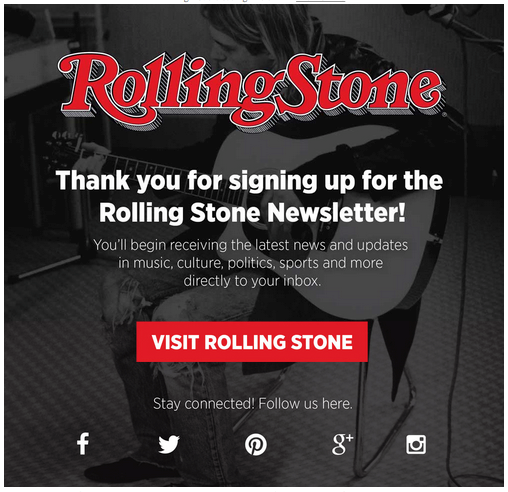
10. Everlane
Type of welcome email: Strategic imagery
Some new subscribers are learning about your brand for the first time while others might have been familiar with your brand for years before subscribing. In either case, using the right photography or imagery can immediately build more familiarity between the subscriber and your brand. As the saying goes, a picture is worth a thousand words, so featuring one powerful image in your welcome email can set the tone for the way new subscribers see your brand.Everlane knows the power of one fantastic photo and they put this to work in their welcome email.Header: "Hello"Everlane has one of the simplest top navigations we’ve seen, allowing the eye to go straight to the brand’s beautiful black-and-white photography. The photo is right at the top, with barely any overlaid text. Subscribers who want to shop or read more can click through to the website, but for those who can only spend a few seconds, photography sends an immediate message about the style of the brand and what to expect.Why it works:
- The featured photo takes up most of the email and clearly communicates the chic yet simplistic nature of the brand and its products
- The introductory offer in the header navigation stands out because of the design’s simplicity
- Email is straightforward and to the point without trying to push subscribers in too many different directions
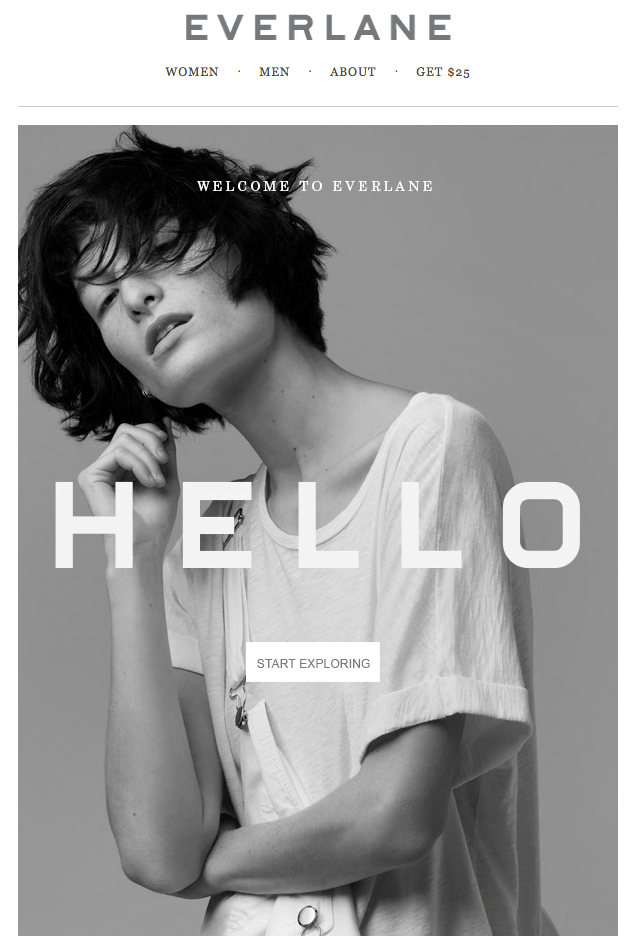
11. Lord & Taylor
Type of welcome email: Value proposition
When a customer subscribes to your mailing list, you get a more engaged customer who will see your brand routinely and will be more likely to buy frequently and become a loyal long-term customer. But what does the subscriber get? You can answer that question in your welcome email by listing out the perks and the value the subscriber is getting. This encourages them to not only stay subscribed but to open your emails when they come in. Check out how Lord & Taylor does this:
Lord & Taylor welcomes subscribers with a list of the three things you can expect from their emails: trends, brands, and deals. It’s the value proposition behind their campaigns, the “why” you made a good move by signing up. The message is coupled with great photography, a pop of brilliant yellow, and one takeaway: shop now. There’s no need to scroll on and on; in fact, there’s barely any reading to do. The shortlist says it all quickly and beautifully.
Why it works:
- Articulates subscriber perks clearly and cleanly
- Features on-brand styling and imagery
- Grabs attention with a banner announcing free shipping
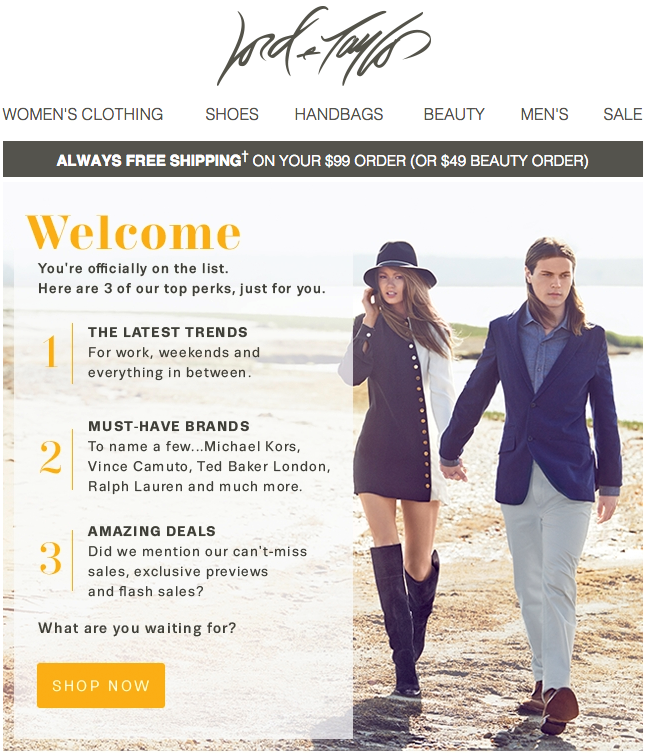
12. Bumble and bumble
Type of welcome email: Exclusivity
Everyone wants to feel special and feel like they’re part of something unique. You can give subscribers that validation in your welcome email by making them feel like they’ve joined an exclusive club. Whether or not your subscriber list or your rewards club actually is exclusive or limited, you can use messaging and imagery that makes subscribers feel like elite insiders. Take Bumble and Bumble’s welcome email for example:
Header: "You Made The List"
The “you made the list” headline immediately makes subscribers feel wanted and included. Bumble and Bumble continue in that vein by showcasing the perks of being part of the club, like exclusive offers and backstage access. Subscribers feel more like a part of the community and more invested as a result.
Why it works:
- Positions mailing list as elite and desirable so subscribers want to stay on the list
- Uses imagery from the backstage of a fashion show to enhance the idea that the subscriber is now an insider
- Guides subscribers toward the next step of shopping or visiting a salon with an online discount code and an easy way to find the nearest salon
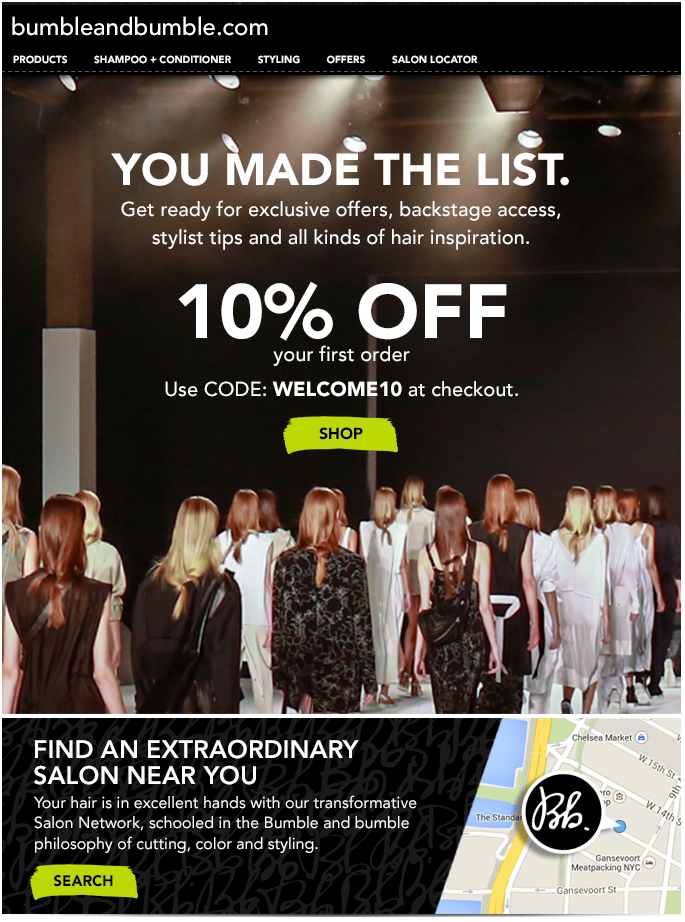
13. Moo
Type of welcome email: Inviting entertainment
When a customer subscribes to your mailing list, it’s (hopefully) the start of a more engaged, active relationship with that customer. While many brands aim to encourage that added engagement in their welcome email by incentivizing the subscriber to go shop, you can also do it by enticing the customer to come to your site for entertainment. Intrigue them with the content you have to offer and beckon them to your site for an enjoyable read.
To see this in action, take a look at Moo’s welcome email:
Header: "Thanks for singing up to the MOOsLETTER!"
Moo does a great job of covering a lot of ground without overwhelming readers. They intrigue the reader with the promise of inspiring stories and helpful tips right off the bat. By using a large, easy-to-read font, keeping messages brief, including great images, and allowing for white space and breathability between sections, Moo also squeezes in multiple calls-to-action (go to the website, get 10% off, connect on social) without it feeling like too much.
Why it works:
- Appeals to subscriber’s desire for entertainment and enjoyment rather than just pushing them to make a purchase
- Uses a clean and simple design so the CTA and the promise of great content aren’t lost
- Includes an appealing discount but doesn’t push a purchase as the only goal of the email
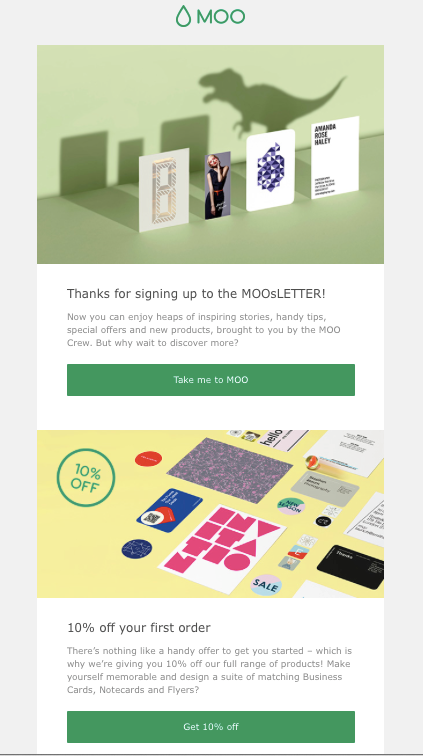
14. Mario Batali
Type of welcome email: Exclusive content
When someone signs up for a mailing list, there’s always still a question in their mind about whether the emails will actually pay off and be the right choice. Even if your mailing list is free, customers have to ask, “Is the content I’ll get worth the burden of having more emails crowding my inbox?” You can show them immediately in your welcome email that they made the right choice by giving them exclusive and exciting new content right away. Chef Mario Batali, for example, does this in a seamless way:Header: "Thanks for signing up for Mario Mail!"Mario Batali doesn’t mess around with his welcome email. Open it up and readers find their first Mario recipe, front and center. By diving into quality content right away, Batali makes an instant connection with readers and provides them with exactly what they are looking for. Plus, the photography is gorgeous, the text is easy to read, and there’s no clutter.Why it works:
- Presents valuable content without delays or making subscribers jump through hoops
- Gives subscribers a preview of what they can expect to see in future emails and why they’ll be glad they signed up
- Uses a navigation bar in the header to subtly invite subscribers to check out other types of content from the brand
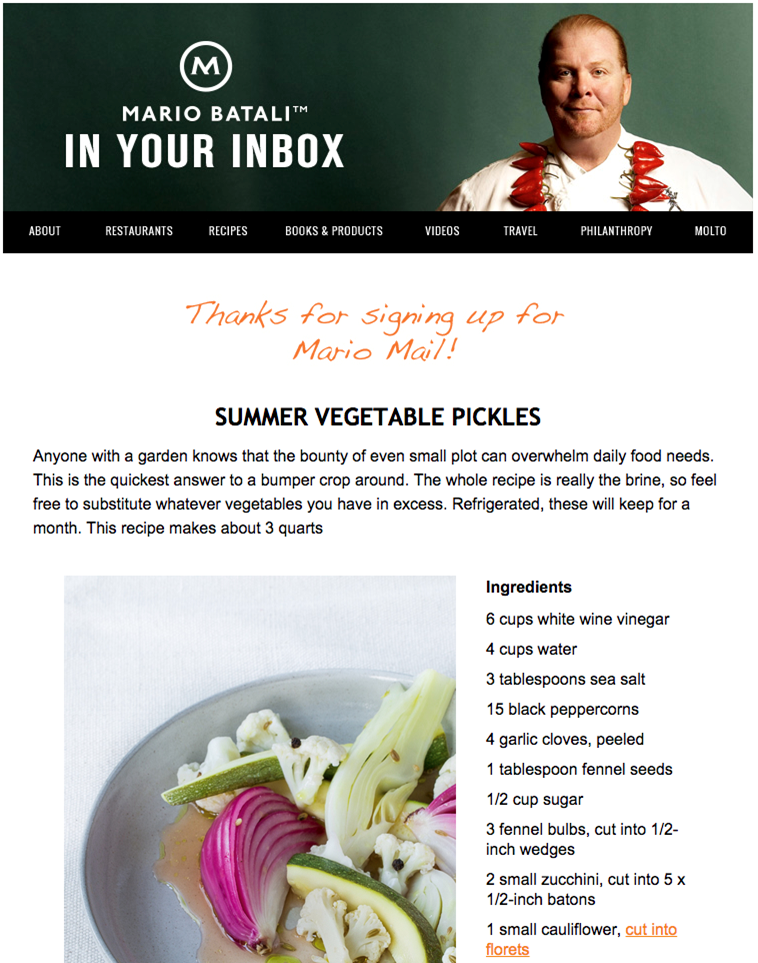
15. West Elm
Type of welcome email: Urgency
So much of marketing can be described as capitalizing on opportunities when they arise, and your welcome email is an excellent opportunity. The subscriber is already engaged enough to sign up so you know they’re interested in your brand, making this the perfect time to offer a discount to encourage them to shop. But you can take advantage of this opportunity even more by creating a sense of urgency for that discount.A limited-time discount makes customers want to shop and save right away because, if it slips their minds later, they might miss out on the savings altogether. Check out how West Elm uses this strategy in their welcome email:West Elm truly motivates readers to jump over to their site and get shopping: they offer a coupon right at the top and a noticeable alert that the discount is only valid for one week. They also make it easy to take advantage of the deal by including a simple, clickable menu reflecting the offerings of their site (furniture, bedding, etc.). By using gorgeous photography and keeping the email simple and full of links, readers almost can’t help but wander right over to its website.Why it works:
- The combination of a discount code and a very obvious time limit on that code prompts subscribers to shop now
- Beautiful and inviting photography is visually appealing and makes subscribers envision how the brand’s products could give their homes a similar look
- The email design is simple and straightforward, with enough detail to catch subscribers’ eyes but not so much to lose sight of the message and CTA
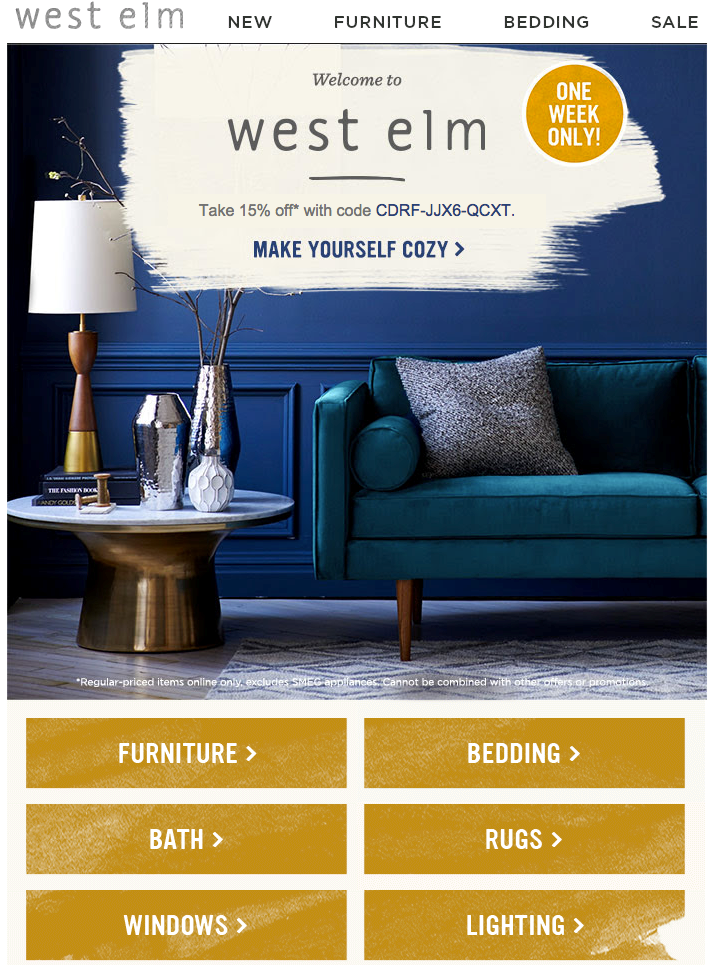
Welcome Email Examples Key Takeaways and Tips
The examples above are all effective welcome emails but they each use their own strategies and designs to make subscribers feel included, encourage sales and conversions, and nurture long-term subscriber relationships. Any of these designs can inspire your welcome email development, but your design isn’t the only factor in your emails’ success. Use these tips and takeaways to make your welcome emails even more effective:
Put thought into your subject line:
Your subject line should be appealing and eye-catching but it should also make the intention of the email clear. Try customizing subject lines like these:
- Welcome to ! Here’s a little treat.
- You’re in! Welcome to the club.
- Thanks for subscribing! Here’s 10% off to show our appreciation.
Be quick:
You want your welcome email to go out as soon as possible after a customer subscribes - ideally, you should set up automation that triggers the welcome email immediately when a new customer subscribes. This will capitalize on the subscriber’s engagement with and interest in your brand at that moment.
Consider a welcome email series instead of a single welcome email:
You could start with an immediate email that confirms the customer’s subscription and gives them a discount code to shop. A day or two later, you could follow it with a more thorough introduction to your brand or the features of your site, and another follow-up email could encourage further interaction by highlighting your social media pages and other ways to engage with your brand.
Quality counts:
Even if a customer already knows your brand well by the time they subscribe, your welcome email is an introduction to the value your mailing list brings. Use only high-quality images and valuable, interesting content to show subscribers that you’re worth the sign-up.
Personalize your welcome emails:
For example, you might have one design for the core of your welcome email but you can add personalized product recommendations or content recommendations at the bottom based on what the subscriber has viewed on your site. This both prompts the subscriber to shop and also makes the email feel more relevant to them.These tips and best practices can help you take your welcome email from a simple subscription confirmation to an excellent tool for strengthening your customer base.
Create welcome emails easily with a template
Now that you have all the secrets to creating an effective welcome email, let’s get to work! When you use the right tools, it’s simpler than you think. With the Beefree email editor, welcome email design is made easy. Our HTML email editor allows you to either create your own welcome email from scratch (with no HTML knowledge needed) or to start with one of our skillfully crafted templates. Find one of our welcome email templates that works for you, like this “Thanks for signing up!” template by Martin Nikolchev.
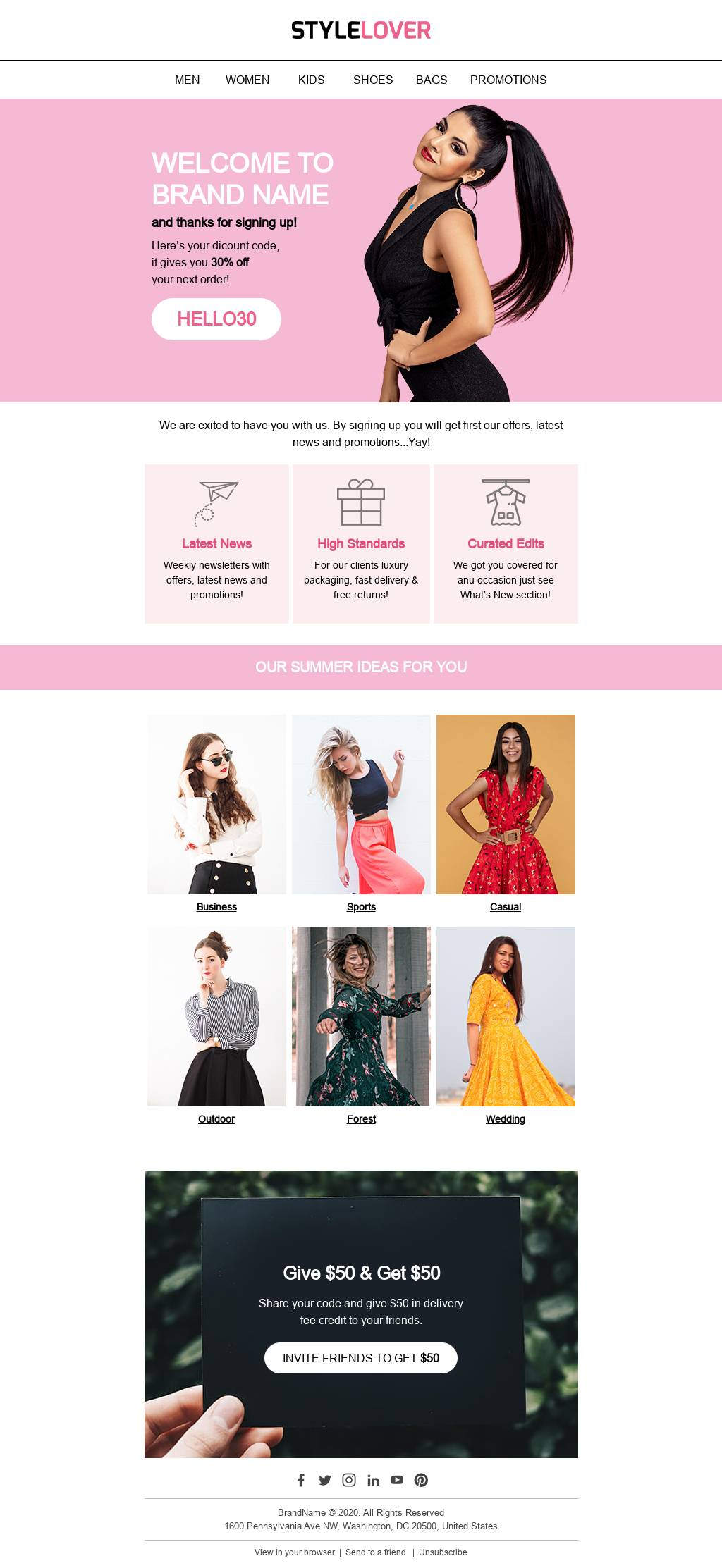
…or the “Hiring Simplified” email by designer Navid Nosrati.

Editor’s Note: This post was updated on September 2023 to ensure accuracy and comprehensiveness.
Share this post with your friends! Pin it on Pinterest?



